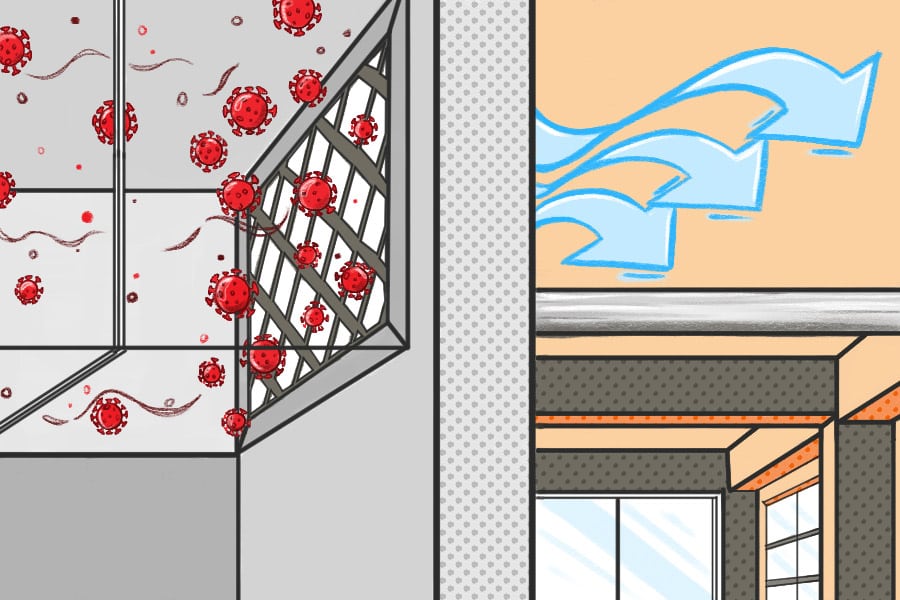Video produced by Justin Hearn
In 2015, international developer Lendlease built a four-story Candlewood Suites hotel at Redstone Arsenal, a U.S. Army post near Huntsville, Alabama. From the outside, the finished structure looks like dozens of other lodgings LendLease has constructed over the years. But instead of conventional steel stud framing, this hotel uses cross-laminated timber (CLT), a type of mass timber that initially gained popularity in Europe several decades ago.
The result: Lendlease cut construction time by 37% using 44% fewer person hours. And the builder achieved that with just an 11-person crew, which included three experienced carpenters and eight unemployed veterans trained on-site as laborers.
Speed and ease of construction are just two of the many benefits that building with CLT provides. Mass timber also offers superior structural integrity, sustainability and aesthetic beauty. And with recent building code changes, mass timber structures can reach heights never allowed for wood buildings.
But what, exactly, is mass timber?
Mass timber transforms small wood into large
Mass timber is an engineered wood product (EWP) that starts with wood particles, fibers, veneers and boards. Then, manufacturers glue, nail or fit pieces together to make big wood suitable for beams, sheets, walls and floors. The finished product retains the light weight of wood but is significantly stronger than similarly sized solid wood. That’s because EWPs randomize the defects found in every piece of wood, enabling use of materials that may not be suitable for other applications.
The result is an assortment of mass timber types:
- CLT is manufactured by aligning boards in one direction, then adding the next layer perpendicular to the first, creating sheets 4-1/2 inches to 13-1/2 inches thick and as strong as steel or concrete.
- Nail-laminated timber (NLT) uses stacked layers of dimensional lumber on end that are fastened with nails or screws. NLT is ideal for floors, roofs and elevator shafts.
- Dowel-laminated timber (DLT) is like NLT, but with dowels instead of nails.
- Glulam uses stacked layers of dimensional lumber on edge, bonded together with moisture-resistant adhesives. Common uses include floors, beams, columns and arches.
Although some type of mass timber fits almost every application, where necessary hybrid systems can also include steel or concrete.
Mass timber buildings score three key wins
Mass timber offers several advantages, starting with its high ratio of strength to weight. That makes mass timber structures lighter but at least as strong as similarly sized buildings made from steel, concrete or masonry. Since wood weighs less, the load transferred to the foundation is lower, requiring smaller, less complex work below grade and saving on excavation and concrete costs.
Although the price of mass timber may be higher than other materials, shorter construction times and lower labor requirements more than make up the difference. Manufacturers can pre-fabricate CLT and precisely cut it to meet requirements for openings and connections, such as doors, windows and ductwork, according to Paul Coats, southeast regional manager at the American Wood Council.
Just-in-time delivery of components saves space on the construction site, and lifting and assembling pieces already manufactured to fit also saves money on labor—and improves safety, with only a few crew members needed in the radius and swing fall of the crane.
Second, mass timber has proven to be a sustainable and environmentally friendly product. Production of steel and concrete account for about 8% of global greenhouse gas emissions annually, according to the “North American Mass Timber State of the Industry Report.”
“When you build with mass timber, the building itself becomes a place to sequester carbon,” Didier said. “When you replant the forest, it also becomes a place to sequester carbon.”
Still, detractors claim manufacturers will clear-cut the forests to produce mass timber, which is also bad for the environment. “It’s a responsibility to use sustainable forestry practices to produce mass timber and maintain a healthy forest,” said Arnie Didier, chief operating officer at the Forest Business Network in Portland, Oregon.
Third, by exposing the structure, mass timber can enable a naturally beautiful building. People feel wood is warmer and more welcoming as opposed to concrete or steel, which may feel cold and uninviting. “Every time people go into my buildings that are wood, I notice that they react completely differently,” said Architect Michael Green in his TED talk, “Why we should build wooden skyscrapers.” “I’ve never seen anybody walk into one of my buildings and hug a steel or concrete column, but I’ve actually seen that happen in a wood building.”
The building may be healthier as well. Using wood in the built environment may reduce occupants’ blood pressure and stress levels, a unique benefit of biophilic—or nature-loving—design, according to Jie Yin and co-authors.
Building codes are evolving to include mass timber
Most U.S. building codes currently don’t allow wood construction of buildings more than six stories. But due to extensive testing, that’s already changing, Coats said. Recent revisions to the International Code Council International Building Code (IBC) allow for a dramatic increase in wood building height, mainly due to CLT. Researchers in engineering and materials conducted extensive testing to show that the material meets the same loads, seismic and gravity requirements required for materials like steel and concrete.
In the new model code for 2021, the height of mass timber buildings will increase dramatically from six stories to 18 stories and from 80 feet to 270 feet above grade at the top. That means even high-rise buildings can now be mass timber. Coats notes that some jurisdictions have already legally adopted the code—including Oregon, Washington, Utah, Denver and British Columbia—as this American Wood Council code adoption map shows. That explains why Vancouver already boasts the 18-story Brock Commons residence hall, whose construction is shown here in a time-lapse video.
‘Every time people go into my buildings that are wood, I notice that they react completely differently. I’ve never seen anybody walk into one of my buildings and hug a steel or concrete column, but I’ve actually seen that happen in a wood building.’
Architect Michael Green in his TED talk, “Why we should build wooden skyscrapers.”
Unsurprisingly, given that mass timber does consist of combustible materials, fire resistance is a critical factor. But just as a whole log chars in a fire, slowing the burning process, so does mass timber. Charring helps maintain the structural integrity of the product, even when it’s exposed to direct flame and intense heat. In fact, tests show that CLT meets at least a two-hour fire resistance rating.
Still, for certain applications, mass timber requires another step.
“The ICC determined the heights for mass timber buildings based on protecting the wood with multiple layers of gypsum, a non-combustible material,” Coats said. “The fire and contents will burn themselves out and not significantly impact the structure.” In addition, sprinkler systems must be redundant, and builders must take measures to ensure fire safety during construction itself.
The forest of mass timber buildings keeps growing
The “North American Mass Timber State of the Industry Report” predicts that, from now until 2034, the number of mass timber buildings will double every year. By then, the North American building industry will store more carbon than it creates.
In 2019, for example, approximately 78 mass timber buildings were constructed in the United States, encompassing 4 million square feet of space.
One factor driving the high profile of mass timber buildings is their popularity with high-tech companies. Google, Facebook, Microsoft and Amazon are all “taking a hard look at mass timber and like what they see,” Didier said. In fact, Microsoft just completed the largest horizontal mass timber structure in North America as an addition to the company’s Mountain View, California, campus.
As new structures demonstrate the perceived vertical, horizontal and aesthetic limits, mass timber is seizing the imaginations of builders worldwide. Wood may have been around for 10,000 years as a building material, but the innovative mass timber products available today are empowering its use for structures in ways never possible.











